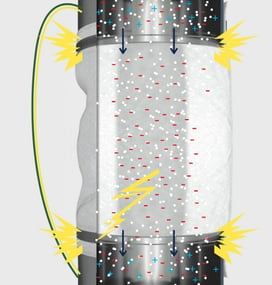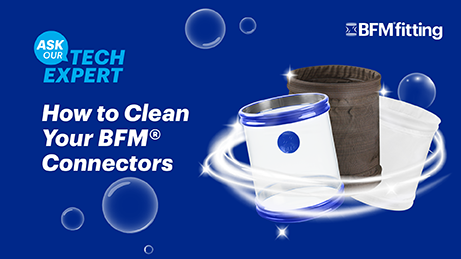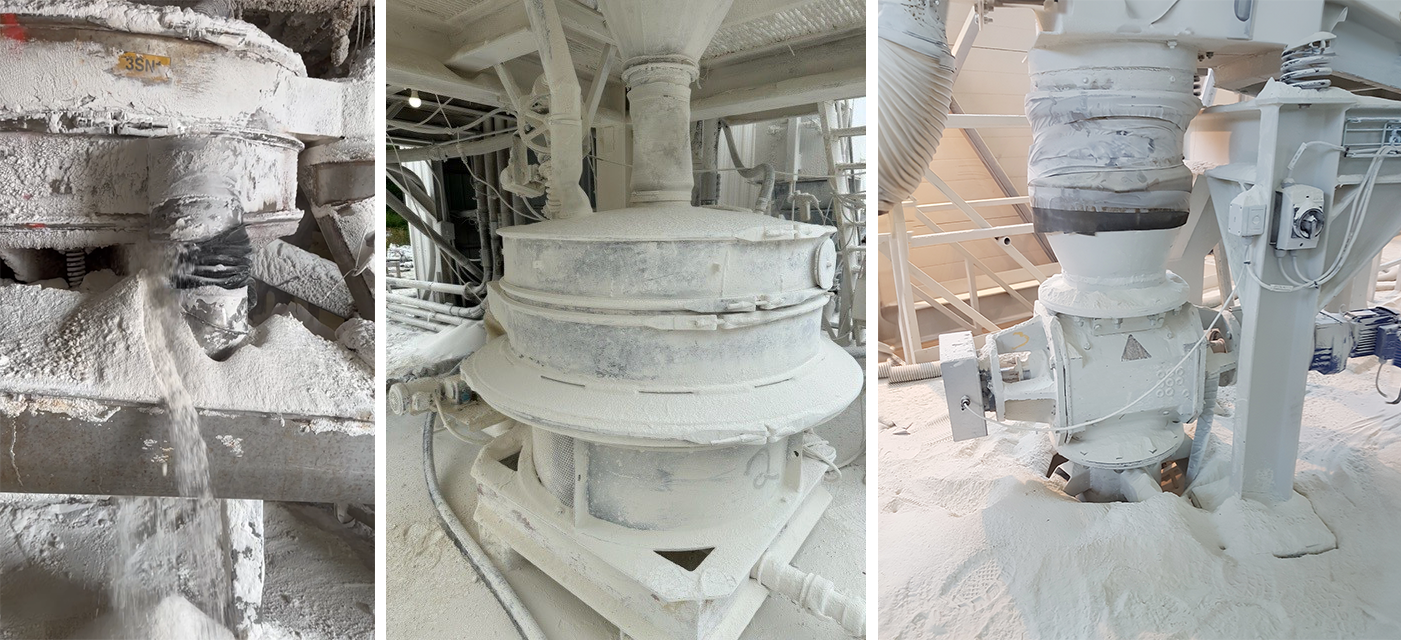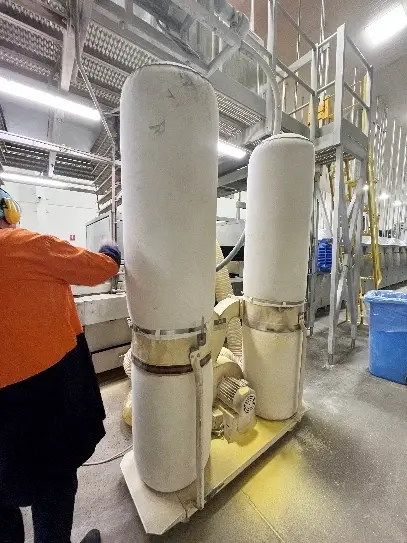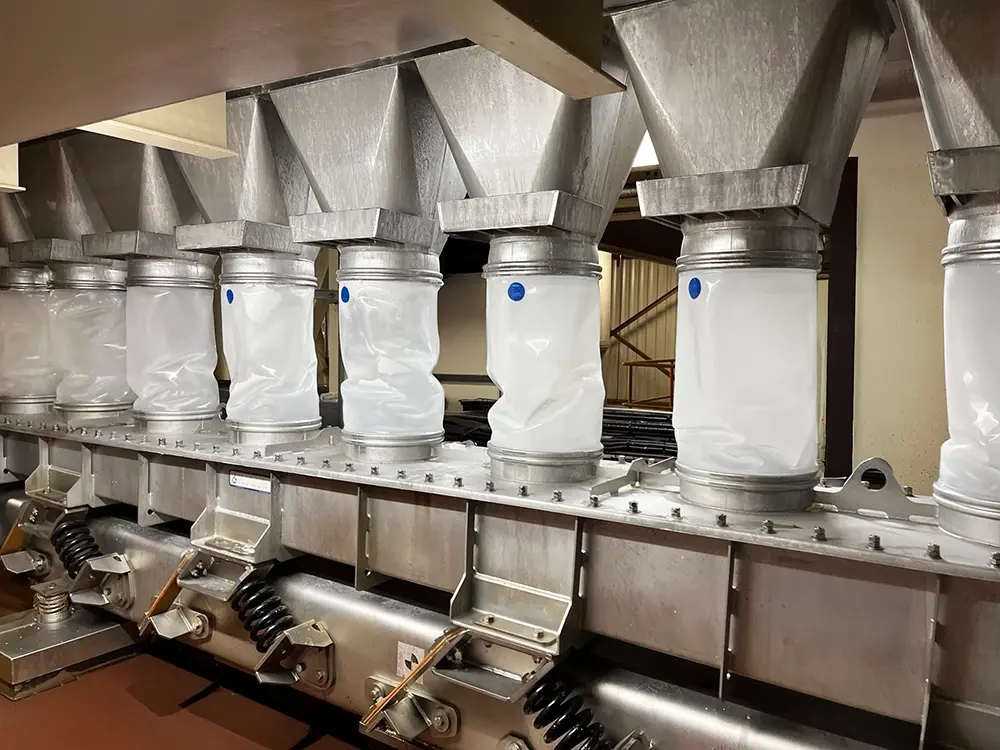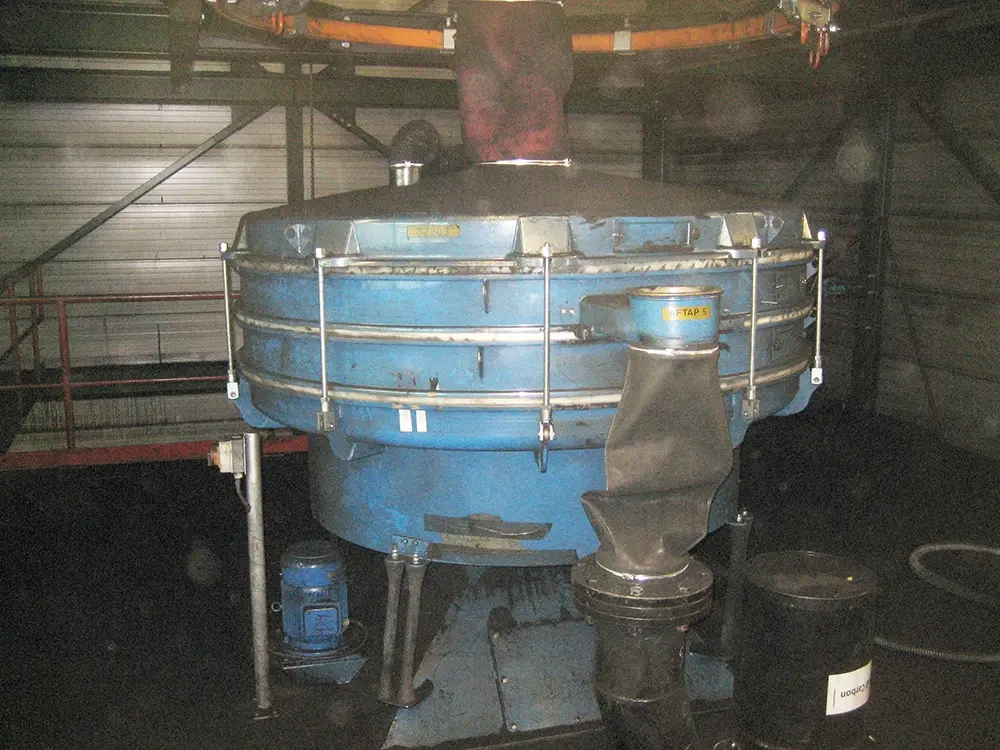Eliminating potential electrostatic build-up is a priority in safety hazard analyses as electrostatic discharges are responsible for a large share of dust cloud explosions in industrial manufacturing.
Generating electrostatic charge during powder processing is almost inevitable. Wherever you have a high volume of surface contact, separation and movement – as happens when powder flows through a pipe - static electricity is created.
Most powders are poor conductors of electricity, resulting in electrostatic charges building up on them, the processing equipment, isolated metal components, and other surfaces within a plant.
If static charges are allowed to accumulate to the point of creating a spark discharge, it can ignite flammable gasses or dusts in the environment, leading to potentially disastrous results.
What are spark discharges?
Spark discharges happen when there is close contact between two materials with different electrical potential. In a factory, spark discharges happen when one isolated piece of equipment, like a metal pipe, becomes charged and comes close to another object, or even an operator, that has a different charge. The difference of electrical potential between the two objects can cause an electrical spark discharge.
This is the key reason why it is so important for any factory handling bulk solids to ensure all parts of its processing systems are adequately earthed.
Electrostatic and flexible connectors
One vulnerable part of a bulk solids processing line is the flexible connections between processing equipment. Product flows through these flexible connectors, generating electrostatic build-up on the non-conductive material.
“We’ve got earthing cables connecting our equipment – isn’t that enough? “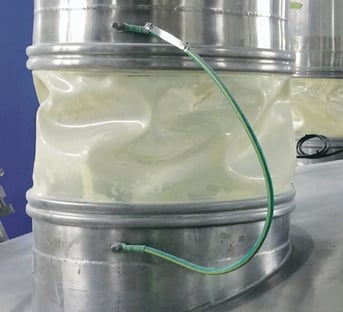 To complete the earthing circuit, cables should always be installed between the top and bottom sections of piping on any transition with flexible connections. The earthing circuit will prevent any electrical differences between the two ends of the pipework. In the event of a fault or earthing issue with your equipment, there won’t be a spark or burst of electricity jumping across your flexible connections which could lead to an ignition or explosion.
To complete the earthing circuit, cables should always be installed between the top and bottom sections of piping on any transition with flexible connections. The earthing circuit will prevent any electrical differences between the two ends of the pipework. In the event of a fault or earthing issue with your equipment, there won’t be a spark or burst of electricity jumping across your flexible connections which could lead to an ignition or explosion.
Inside a flexible connector, however, electrostatic build-up still occurs even when it has earthing cables. The constant charge being built up will naturally try to find the fastest route to earth via the nearest conductive material – the metal pipes. This can see arcing or sparks occurring within the connector itself as the charge jumps to the nearest piece of metal in an uncontrolled fashion – to then make its way to earth via the grounding cables.
The continual flow of product during normal operation creates a constant risk of static build-up within the flexible connection itself, which is why you need to carefully consider what flexible connector you choose.
How to choose connectors for safer processing?
As a manufacturer, you will need to ensure you are complying with global safety regulations, like ATEX & IECEx, to reduce your combustible dust explosion risks. When choosing your flexible connectors, there are both process and connector design and material factors that need to be considered.
Whilst the combustible nature of the product and the volume of product flow are extremely important in assessing your risk, it is always advisable to choose connectors made from static-dissipative materials. You should also keep your flexible connections as short as possible as this will mean there is less surface area for static to build-up on.
What are static dissipative materials?
Static dissipative materials generally have a surface resistivity of more than 1×104 ohms but less than 1×1012 ohms. They help alleviate any electrostatic build-up during normal operation and drain the charge in a predictable, controlled fashion, out through the grounded pipework.
Be careful with flexible connectors made of materials like silicon and rubber which are insulative rather than dissipative, as these products are potentially dangerous options.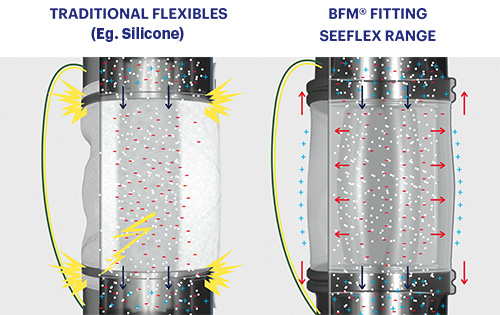 The BFM® fitting range of Seeflex products are made from a unique, ether-based polyurethane and are all designed to dissipate electrostatic build-up. The most popular and widely used product, Seeflex 040E, has a surface resistivity of 1010 and the specialist anti-static product Seeflex 040AS rates at 108.
The BFM® fitting range of Seeflex products are made from a unique, ether-based polyurethane and are all designed to dissipate electrostatic build-up. The most popular and widely used product, Seeflex 040E, has a surface resistivity of 1010 and the specialist anti-static product Seeflex 040AS rates at 108.
BFM® Seeflex products are strong and offer a transparent or semi-transparent transition that allows visibility of product flow. If product visibility is not a priority, the most static dissipative connector in the BFM® fitting range is a pure PTFE product, Teflex NP Black, which not only tolerates high temperatures and extreme chemicals but has an impressive surface resistivity of 106.
Whilst flexible connectors themselves can’t eliminate static build-up completely, static dissipative connectors like the BFM® fitting range will help reduce the chance of spark discharges occurring and potentially igniting a combustible dust explosion.
There are many important factors to consider when reviewing plant safety with electrostatic build-up, containing explosions and preventing dust leaking into your plant in the first place.
Find out more about how the BFM® fitting system helps to make your plant safer by addressing these issues.
